Lemon sharks (Negaprion brevirostris) are a tough, adaptable, nearshore species, found along the eastern coast of the United States, south to southern Brazil as well as the western shore of the Americas from Baja to Ecuador, in addition to the western coast of Africa. Because of their hardiness and accessibility, they’ve been heavily studied by many prominent shark scientists. Dr. Eugenie Clark’s work with lemon sharks demonstrated that sharks can be conditioned and trained, while Dr. Samuel Gruber continues to study habitat selection and homing behavior with the species. A lot has been learned about sharks in general thanks to the humble lemon shark.
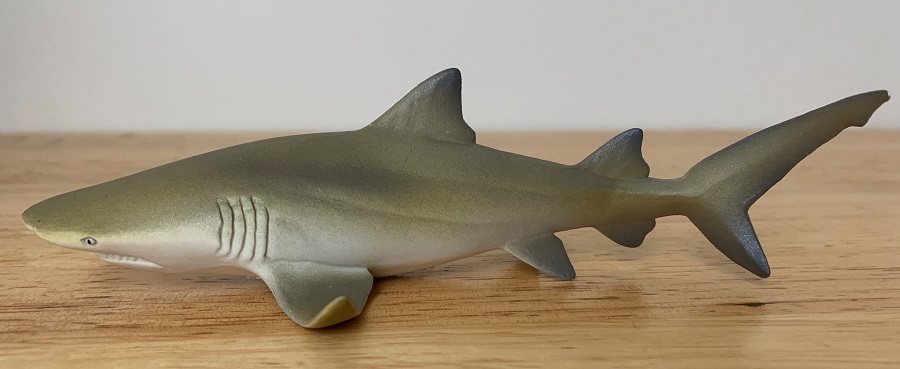
Lemon sharks have surprisingly been produced in plastic quite a few times, but usually as bargain bin type toys. Today we’re looking at the 2018 Safari lemon shark, perhaps the only serious attempts to make a lemon shark for the discerning collector.

The Safari lemon shark measures 6.25” (15.8 cm) when measured down the curve in its tail. The actual lemon shark reaches a length of 7-10’ (2.1-3 meters). This puts the Safari lemon shark at 1/13 to 1/19 in scale.

Lemon sharks belong to the requiem shark family (Carcharhinidae) along with species like the bull, tiger, blacktip reef, and blue sharks. Lemon sharks mostly feed on smaller bony fishes but will also consume crustaceans, rays, smaller sharks, and sea birds. Only 10 unprovoked attacks have been attributed to the species by the International Shark Attack File, all of them non-fatal. Lemon sharks are a social species that prefers shallow waters and utilizes mangrove forest habitats as nurseries for their young. Female lemon sharks are viviparous, their young are fed via a placenta and umbilical cord and are born live.
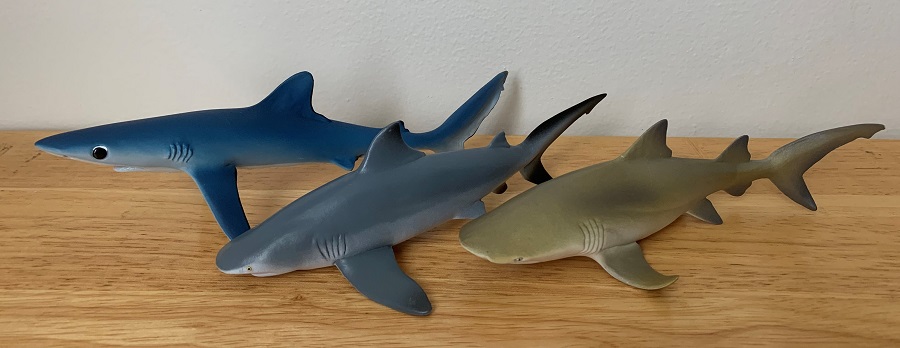
Safari has produced a lot of excellent sharks in recent years, and this one is no exception. The first and second dorsal fin are close to the same size, with the first dorsal set far back, behind the pectoral fin origin. The figure has a stocky build, and the head is flat with short, blunt snout. The only error I can find is that the pectoral fins edges appear too straight when they should be slightly falcate.
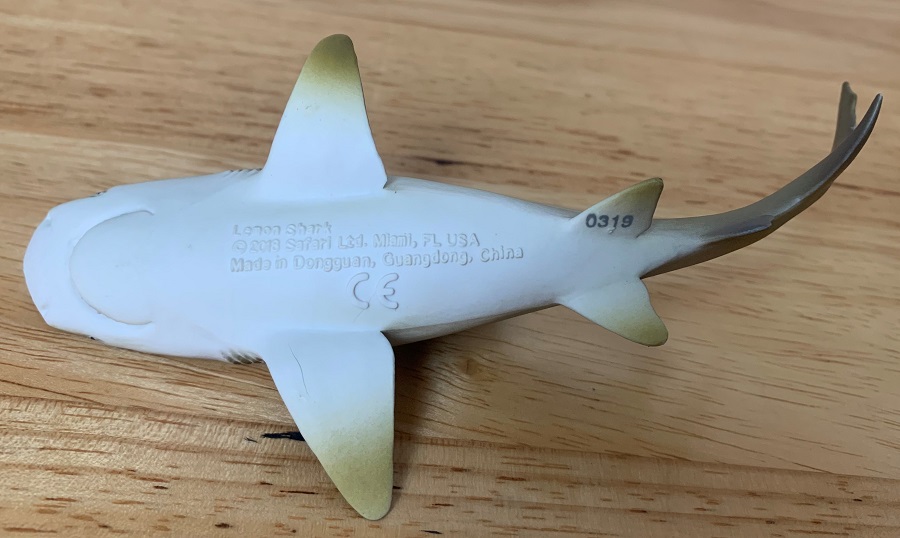
The Safari lemon shark is painted in a sandy yellow color that’s darker dorsally and nicely fades to pale on the underside. This coloration is what gives the lemon shark its name and it serves as camouflage for the species, matching the sandy bottom habitats they dwell in. The inside of the mouth is unpainted, which gives the figure a somewhat unfinished look.
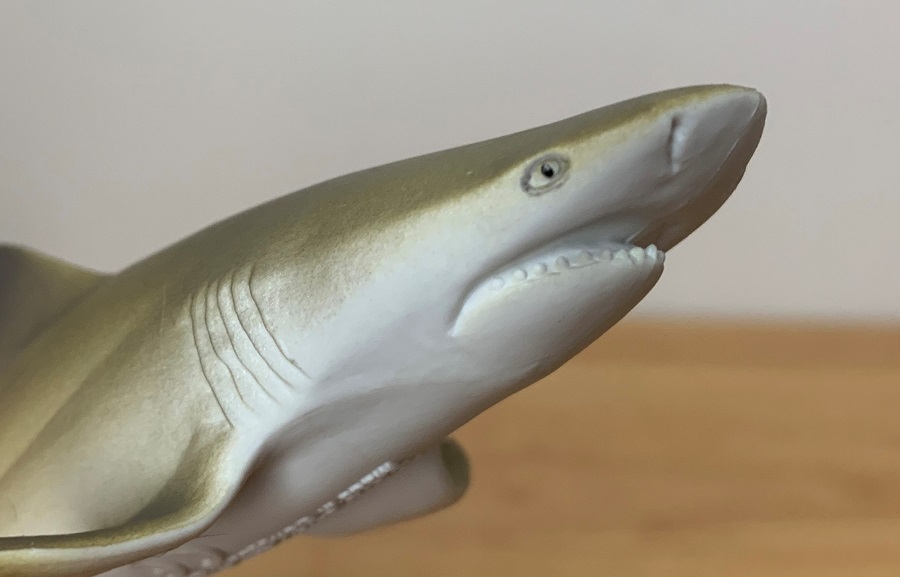
The figure lacks claspers, making it a female. Five gill slits are present, and teeth are sculpted on the lower jaw. Unlike the Safari thresher shark, this one has sculpted nostrils. The eyes are white with black elliptical pupils. Lemon sharks often live in murky waters and hunt at night.

The Safari lemon shark is an exemplary figure of a scientifically important shark species and is essential to any collection of cartilaginous fishes. This figure is still in production and retails for about $6.50.
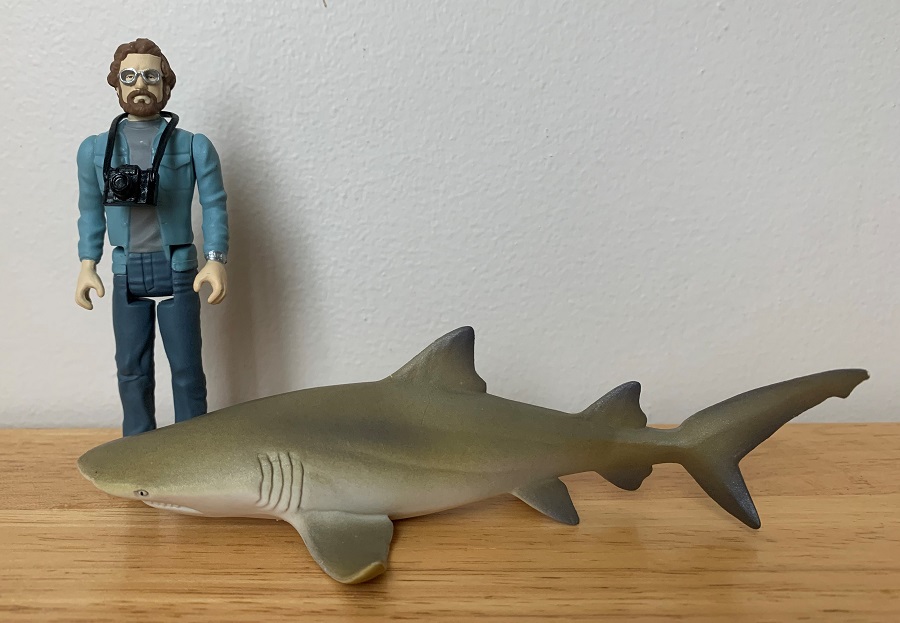
Disclaimer: links to Ebay and Amazon on the AnimalToyBlog are affiliate links, so we make a small commission if you use them. Thanks for supporting us!




I have this figure and love it. I am not sure how many figures there are of this species; my (vague) memory tells me there is a Kaiyodo Aquatales figure, but I could be mistaken.
Looking on eBay I see a few different cheap bargin bin toys. I know Boley makes a lemon shark, I’ve seen it at Wal-Mart, and K&M has one too. Nothing comes up in my search for a Kaiyodo lemon shark. I think a lot of the cheaper ones are just generic shark bodies painted yellow.
Definitely gonna keep this one in mind. At some point in the upcoming weeks, I’m gonna splurge on shark toys.
That’s exciting! I look forward to seeing what you get.
Just another great shark figure from Safari. Keep ’em coming..